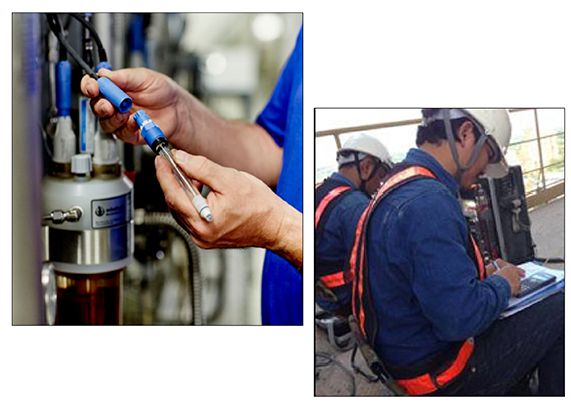
GLens Labs is qualified and has the necessary equipment to conduct indoor air quality analyses and microbiology air analyses. We test air for Environmental, Microbiology and Industrial Hygiene analyses, depending on the need of our clients. Our sampling media ranges from cassettes, swabs, and even summa canisters, to name a few. Glens Labs can supply the needed sampling or media kit as necessary to perform the analyses. We also have a certified team that conducts sampling at the request of the client.
 Procedures for Calibrating Particulate-Monitoring CEMs
Procedures for Calibrating Particulate-Monitoring CEMs
| Spread of data (Spread > 15% of ELV) | Medium to high-level cluster (Emissions higher than 30% of daily average ELV) | Low-level cluster (Emissions not more than 30% of daily average ELV; linear regression produces R2<0.9)) |
| Performance Calibration of CEMS (AST) – WID & LCPD | ||
Apply EN 14181
|
Apply EN 14181
|
Apply EN 14181
|
| Other PPC/EPR permits | ||
Apply ISO 10155
|
Functional tests as specified in ISO 10155
|
Functional tests as specified in ISO 10155
|
GLens Labs will follow the procedures for calibrating particulate monitors according to the requirements of BS ISO 10155 and BS EN 14181 (as supplemented by BS EN 13284-2), especially for low concentrations of particulate matter.
GLens Labs follows the ISO 10155 and BS EN 14181 (supplemented by BS EN 13284-2) to calibrate Continuous Emission Monitoring systems (CEMs) for Particulate Matter (PM) using parallel measurements with a specified number of repetitions of a standard reference method (SRM).
These two standards are based on the premise that CEMs have a linear response to increasing concentrations of uniform particulate, when using reference methods. In order to derive a reliable calibration function, the below mentioned standards will be followed:
A good spread of data, or medium to high-level clusters (including some values at or near zero for all cases) in situations where EN 14181 applies.
An acceptable level of accuracy and precision for the SRM or reference materials.
A regression line which passes through zero, or near to zero.
If the correlation co-efficient (R2) of the regression line for the CEM and SRM data is 0.9 or more, then the calibration function will most likely be valid.
Requirements of BS EN 14181 to Calibrate Particulate CEMS:
- BS EN 14181 has two requirements which require the use of surrogates and related procedures
- Linearity tests. The test laboratory can also use the results of this test as an alternative means of calibration if there is insufficient SRM data.
- Zero and span tests.
- If the design of the CEM does not provide for conventional zero and span tests, then the operator may use an alternative procedure that reflects the response of the CEM, if it were measuring the target determined.
- If the design of the CEM does not provide for linearity and drift checks at all, once the CEM is operating on an industrial process, then the operator will not be able comply with BS EN 14181.
Requirements of ISO 10155 – medium to high-level clusters to Calibrate Particulate CEMS:
- ISO 10155 describes a procedure for calibrating PM CEMs using repetitions of the SRM. This standard is based on the premise that the emissions will vary, or can be varied. Then the test laboratory repeats the SRM three times at three different concentrations, therefore producing nine SRM measurements.
- ISO 10155 therefore provides for cases where there is a spread of data, but not for clusters. In order to determine calibration factors for PM CEMs at installations where the emissions are not low (i.e. above 30% of the ELV), but occur as medium to high-level clusters, use the following procedure.
- Ensure that the CEMs read zero when the emissions are zero.
- Take at least five SRM measurements when the process is operating normally.
- Take an average of the SRM measurements and the CEM measurements, and then use these averages to determine a calibration factor.
- There is no need to perform the statistical tests specified in ISO 10155, as these tests apply to cases where linear regression can be applied, i.e. when there is a spread of data.
Regulation when particulate monitors cannot be calibrated
- If a test report states that a particulate monitor cannot be calibrated due to very low emissions, then the output of the CEM will be qualitative. Whilst it may be possible to intuitively set the reading of the CEM to provide an output in mg.m-3, such readings will be an approximation at best, with a strong likelihood of high levels of uncertainty. Unless it is possible to produce higher, representative emissions from the process, such readings should be disregarded for regulatory purposes when compared to an ELV, even if there is an apparent breach of the ELV.
- However, the output from the particulate monitor can demonstrate whether the process is under control or not. Therefore such outputs should be regarded as an indicative trend, which can then demonstrate if there is a significant change in the process resulting in an increase in emissions that requires attention as soon as possible. Hence an operator must have operational procedures in place to respond appropriately to such changes indicated by the particulate monitors.

